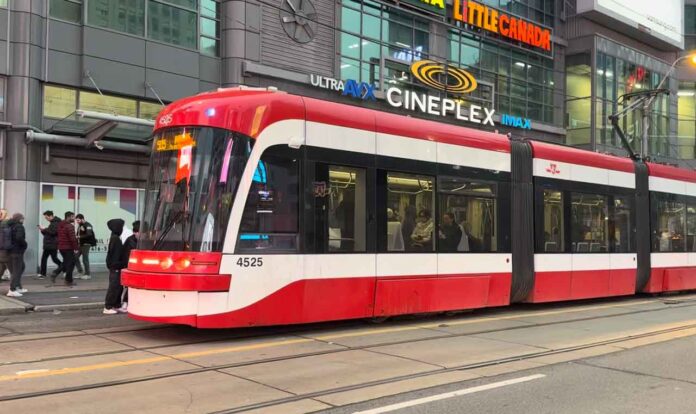Infra
Rise in rodent complaints has Toronto councillors pushing for pest control strategy | CBC News

Toronto councillors smell a rat.
And some are pushing the city to adopt a rodent reduction strategy, as they say major construction projects and climate change are contributing to a growing pest problem.
Councillors on the city’s Infrastructure Committee this week asked a broad swath of city department heads to create the strategy. Coun. Alejandra Bravo said that the large volume of construction projects around the city are disturbing rats, causing them to emerge from underground tunnels and burrows.
“We’re building more and construction shakes the ground, rats are released into neighbourhoods, and we need to figure out how to get ahead of it,” she said.
“The problem is getting worse.”
The committee is directing the city manager and medical officer of health, among other top civil servants, to report back by next summer with a rat action plan. Councillors are also asking the city manager to consult with other North American cities on their approach to rat reduction.
In Ontario, Bravo said Peel Region and the City of Ottawa have created rat reduction strategies. So too have cities like New York, Chicago and Washington, D.C. She said Toronto can learn from all of them as it creates its own unique approach.
“This rat situation is a North American problem,” she said.
Homeowners responsible for pest control
Currently, most homeowners are responsible for pest control on their properties. And that can mean hundreds or thousands of dollars spent on professional exterminators.
Until earlier this year, Peel Region offered subsidies to qualifying home owners to address rat problems outside of their homes. Bravo could not say if Toronto’s program might include that, but she said some of the complaints she’s received from constituents stress that cost is a problem, especially for struggling businesses and families.
“It is expensive,” Bravo said. “I think that the important thing here is let’s get ahead of it. Let’s recognize and confront this problem that we have.”
The city says 311 calls about rodent issues left unaddressed by property owners or landlords have been increasing. There were nearly 940 property standards-related rodent service requests to the city in 2019. Those numbers dipped during the pandemic, but jumped back up to over 1,400 complaints in 2022. They increased again in 2023 to nearly 1,600 calls.
Up to the end of June this year, 311 has received almost 780 calls.
Residents in south Etobicoke say a rat infestation is plaguing their neighbourhood, and they’re blaming it on an impromptu garbage dump set up by people living in a nearby tent encampment. They say the city has been no help with solving the problem. CBC’s Britnei Bilhete has more.
City staff say single rats spotted multiple times could be behind some of the numbers, but even with that taken into account, it’s clear the numbers are on the rise.
They say a variety of factors could be contributing to the increase, including the number of post-pandemic construction and renovations projects and the closure of restaurants causing rats to seek other food sources.
“Staff are not able to definitively determine what has resulted in the increase in numbers but have seen reports of similar patterns in other cities,” city spokesperson Elise von Scheel said in a statement.

City tried to create rat reduction strategy in 2018
This isn’t the first time city council has tried to tackle Toronto’s rat problem.
In 2018, former councillor Ana Bailão spearheaded a push to have staff create a rat reduction plan. That was adopted by council, but work on the report was scuttled by resource constraints during the pandemic.
Deputy Mayor Jennifer McKelvie, who chairs the infrastructure committee, said the “unprecedented” level of construction across the city is a major contributing factor to a growth in complaints.
Part of the solution might be on construction sites themselves, she said. “Can we manage our construction sites differently? Do we have to require traps in different places?”
Coun. James Pasternak is skeptical that a rat reduction strategy could truly have an impact on the pest population. Public education about secure garbage disposal and asking developers to deal with on-site infestations is key, he said.
“When you try to contain these issues, it’s beyond the reach of a municipality in many ways,” Pasternak said. “We can put certain regulations in there, but they’re hardly enforceable.”
Pest control company Orkin Canada says the city numbers line up with what they’re seeing, as the number of calls for service increase in Toronto. The company’s technical director, Sean Rollo, said he’s glad to see Toronto taking action to address the problem.
“We certainly are seeing increases, year-over-year, on the number of calls in the Toronto area,” he said. “One of the major dangers for the city not doing anything is, of course, the rodent population can increase and it can get out of control.”
Rollo said a variety of factors are likely contributing to the increase and no one solution will address the problem. The city could focus on controlling rodent populations in municipal spaces like parks, and follow other cities lead and require rodent reduction plans for major construction projects, he said.
“I don’t think there’s a silver bullet here,” Rollo said. “Education is going to be one part of it in terms of what can the community at large do to also help to mitigate rodents.”
Ultimately, the request for the rat action plan must be approved by city council at a meeting later this month.










